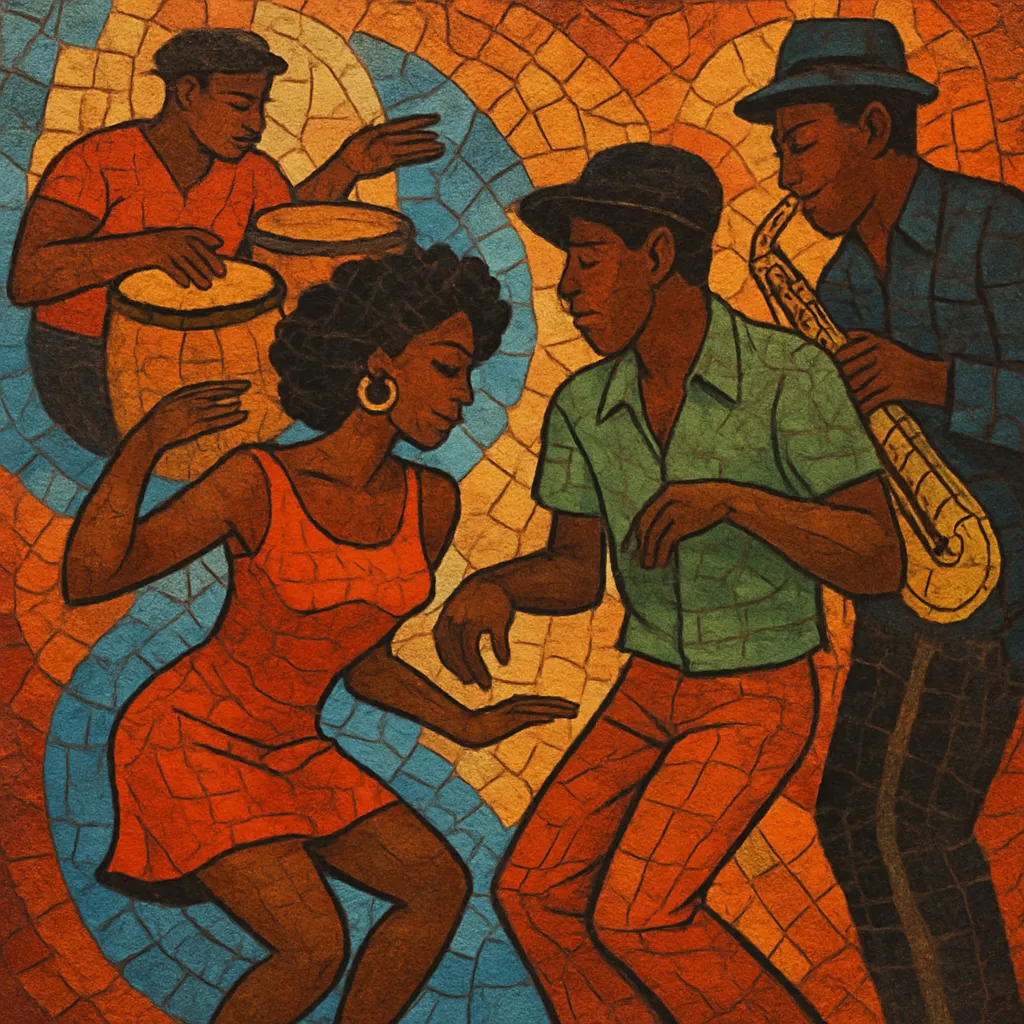
Boogaloo (also called bugalú or Latin boogaloo) is a mid‑1960s New York dance music that fuses Afro‑Cuban and Puerto Rican rhythms with African‑American R&B and soul.
It features son/cha‑cha‑chá percussion under a strong backbeat, bluesy horn riffs, call‑and‑response coros, and catchy, often bilingual (English/Spanish) hooks.
Compared with earlier mambo and pachanga, boogaloo is leaner, more groove‑driven, and aimed squarely at youth dance floors—think handclaps, cowbell, piano montunos, and punchy brass vamps supporting simple, memorable choruses.
Boogaloo emerged in New York City—especially Spanish Harlem and the Bronx—when young Nuyorican musicians blended the Afro‑Cuban/Puerto Rican dance-band tradition (son, mambo, cha‑cha‑chá, guajira) with the backbeat, harmonies, and stage energy of African‑American R&B and soul. Early club and social-dance contexts, along with youth slang and Spanglish lyrics, shaped the music’s direct, streetwise character.
Between 1966 and 1968, boogaloo exploded with crossover hits like Joe Cuba Sextet’s “Bang Bang,” Pete Rodríguez’s “I Like It Like That,” and Johnny Colón’s “Boogaloo Blues.” These records used piano montunos, congas/bongos/timbales, cowbell-driven grooves, and tight horn lines, while foregrounding English-language hooks and call‑and‑response coros. The sound was lean, danceable, and irresistible to both Latino and Black audiences.
By the late 1960s, the scene tilted toward a codified salsa sound as labels, bandleaders, and arrangers folded boogaloo’s crossover appeal into fuller Afro‑Caribbean orchestrations and repertoire. Many boogaloo artists—Joe Bataan, Ray Barretto, Willie Colón, Richie Ray & Bobby Cruz—became key figures in early salsa, carrying forward the rhythmic drive and bilingual urban sensibility.
Although its commercial peak was brief, boogaloo’s DNA persists in salsa’s punchy mambos, urban coros, and crowd‑moving breaks. Periodic revivals, reissues, and documentaries have renewed interest since the 1990s, cementing boogaloo as a pivotal bridge between Latin dance-band traditions and soul-era pop culture.

